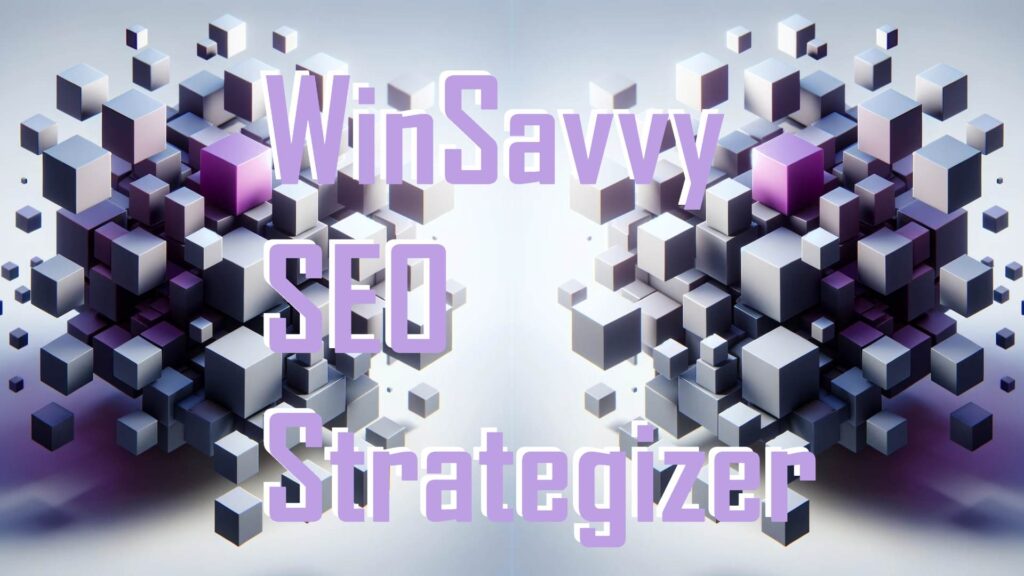In the hyper-competitive world of online marketing, capturing a prospect’s attention for more than a few seconds can be a Herculean task. This is where interactive tools like quizzes and surveys come into play. They not only engage your audience but also provide valuable insights into their preferences, pain points, and needs. In this comprehensive guide, we’ll explore how quizzes and surveys can be strategically used for lead generation, dissecting each aspect from ideation to execution and finally, analysis. Buckle up; you’re in for a detailed ride!
Table of Contents
- Understanding the Power of Interactive Content
- Designing Your Quiz or Survey for Maximum Engagement
- Types of Quizzes and Surveys for Lead Generation
- Crafting the Questions: The Do’s and Don’ts
- Effective Placement and Promotion Strategies
- Using Analytics for Continuous Improvement
- Case Studies: Real-world Examples of Success
- Summary and Key Takeaways
Understanding the Power of Interactive Content
Before we delve into the nitty-gritty of quizzes and surveys, it’s crucial to understand the broader landscape of interactive content and why it holds so much potential for lead generation.
Engagement is the New Currency
In today’s world, engagement has become a form of social currency. The more your audience interacts with your content, the more they are likely to trust your brand and convert into paying customers. Traditional forms of content, such as articles and blog posts, offer a one-way stream of information. Interactive content like quizzes and surveys, however, invites the audience to participate, thereby establishing a two-way communication channel.
Information Gathering with Consent
It’s the age of data-driven decisions, but obtaining accurate data without infringing upon privacy is a balancing act. Quizzes and surveys serve as consensual means of gathering information. Participants willingly provide insights into their preferences and behaviors, thereby enriching your customer database.
Boosting Conversion Rates
Interactive content has been proven to boost conversion rates significantly. According to a study by Demand Gen Report, interactive content generates conversions moderately or very well 70% of the time, compared to just 36% for passive content.
Personalization and Segmentation
Quizzes and surveys enable you to gather specific information about individual leads, which can be gold when it comes to personalization and segmentation. The more customized your follow-up strategy, the higher the chances of converting that lead into a customer.

Related: Check out our free SEO suite

Designing Your Quiz or Survey for Maximum Engagement
Creating a quiz or survey that both educates and engages is more of an art than a science. Here’s how you can craft one that not only captures attention but also leads.
Know Your Objectives Clearly
Before putting pen to paper, or rather finger to keyboard, be clear about what you want to achieve with your quiz or survey. Is it brand awareness, customer engagement, or straight-up lead generation? Your objective will influence the design, questions, and promotional strategies.
- Brand Awareness: If this is your goal, opt for a quiz or survey that’s more light-hearted and shareable. Think: “What Type of Entrepreneur Are You?” or “How Much Do You Know About Sustainable Living?”
- Customer Engagement: Here, the quiz or survey can be a bit more detailed, seeking opinions from customers about your products or industry trends.
- Lead Generation: In this case, your quiz or survey needs to be focused on gathering actionable insights. The questions should be designed to qualify leads in or out, providing you with a targeted list.
The Psychological Aspects: Playing into Curiosity and Ego
Humans are naturally curious creatures. We also like to feel good about ourselves. A well-designed quiz or survey can tap into these traits. For instance, a quiz titled “How Much Do You Know About Digital Marketing?” taps into the user’s desire to test themselves, and by extension, show off a bit. This psychological play can result in higher participation rates.
The Fun Element: Nobody Likes a Boring Quiz
Even if your industry is “serious,” your quiz doesn’t have to be. Incorporating elements of fun can go a long way in encouraging participation. Use humor, playful graphics, and engaging questions to make your quiz or survey as enjoyable as possible. People are more likely to share (and therefore, amplify) your content if they enjoyed the experience.
Mobile Optimization: Don’t Neglect the Small Screen
In today’s mobile-first world, ensuring that your quiz or survey is optimized for mobile devices is a non-negotiable. According to Google, 61% of users are unlikely to return to a mobile site they had trouble accessing, and 40% would visit a competitor’s site instead. Thus, make sure your interactive content looks and works just as seamlessly on mobile screens as it does on desktops.
Creating a Compelling Lead Capture Form
The objective of generating leads necessitates a form that captures information. But beware of overwhelming your audience with too many fields. Stick to essential information such as name, email, and perhaps one more field like a phone number or company name, depending on your needs. Also, make sure to reassure your participants that their data will be kept confidential, possibly linking to your privacy policy.
Types of Quizzes and Surveys for Lead Generation
When it comes to quizzes and surveys for lead generation, one size definitely doesn’t fit all. Depending on your objectives, target audience, and industry, the format you choose can vary. Here’s a rundown of the most effective types, each with its unique benefits and best practices.
Personality Quizzes
What They Are: Personality quizzes categorize respondents into different “types” based on their answers.
Best Practices:
- Clear Categories: Make sure each personality type is clearly defined and offers some form of value or actionable advice to the participant.
- Visual Elements: Use images or graphics to add more depth to each personality category, making the results more shareable.
Ideal For: B2C companies, especially in lifestyle, fashion, and wellness sectors.
Knowledge or Trivia Quizzes
What They Are: These quizzes test the participant’s knowledge on a specific subject.
Best Practices:
- Difficulty Balance: The quiz should be neither too easy nor too hard. A mix of question difficulties keeps participants engaged.
- Instant Feedback: Providing immediate answers can make the quiz more educational and engaging.
Ideal For: Both B2B and B2C, especially useful for industries like education, technology, and any subject-matter experts.
Product Recommendation Quizzes
What They Are: These quizzes recommend a product based on the participant’s responses.
Best Practices:
- Streamlined Choices: Don’t overwhelm the user with too many product options. Keep it simple and relevant.
- Incentivize: Offering a discount or special offer on the recommended product can improve conversion rates.
Ideal For: Retail and e-commerce sectors, but can also be adapted for service-based industries.
Surveys with Rating Scales
What They Are: Surveys that ask the participant to rate various statements on a scale, typically from 1-5 or 1-7.
Best Practices:
- Clarity: Make sure each point on the scale is clearly defined (e.g., 1=Strongly Disagree, 5=Strongly Agree).
- Analysis: These surveys offer quantitative data that can be easily analyzed to draw actionable insights.
Ideal For: Customer feedback, market research, and employee engagement for all kinds of businesses.
Open-Ended Surveys
What They Are: These surveys feature open-text boxes where respondents can type their answers.
Best Practices:
- Guidance: Offer examples or prompts to guide the respondent in answering effectively.
- Limited Usage: Use open-ended questions sparingly to not overwhelm the respondent.
Ideal For: Gaining qualitative insights for complex questions, such as customer pain points or product improvement suggestions.
This is just the tip of the iceberg when it comes to types of quizzes and surveys. The key is to choose the format that aligns with your goals and resonates with your target audience.

Related: Check out our free SEO suite

Crafting the Questions: The Do’s and Don’ts
Asking the right questions in the right way is at the heart of any successful quiz or survey. Whether you’re aiming for brand awareness or focused lead generation, the questions you ask can make or break the experience for participants.
The Art of Simplicity: Less is More
Keeping questions and answers simple makes for a smoother user experience. Avoid industry jargon, complex sentences, or multiple concepts bundled into one question. The rule of thumb here is: if your question needs a lengthy explanation, it probably needs to be simplified.
Multi-Choice vs. Open-Ended: Know When to Use Each
Multi-choice questions are generally quicker to answer, making them ideal for quizzes. However, open-ended questions can offer deeper insights into customer pain points, opinions, and preferences. Use a mix of both, but lean towards multi-choice for lead gen quizzes and use open-ended questions sparingly in surveys where you genuinely need detailed feedback.
Ranking and Scaling: Use Sparingly but Effectively
Questions that ask participants to rank items or scale their responses can offer rich data. However, these questions can be more time-consuming and mentally taxing for the respondent. Use them when you need to understand preferences or intensities but limit their number to prevent survey fatigue.
Keeping Questions Relevant: Context Matters
Irrelevant or off-topic questions are a quick way to lose participant interest. Every question should serve a clear purpose, either qualifying the lead, providing useful data, or enhancing engagement.
Logical Flow: Keep It Smooth
The sequence of questions should follow a logical flow, building upon previous questions or leading the respondent naturally to the next topic. Some sophisticated quiz and survey tools allow for conditional logic where subsequent questions are displayed based on prior responses, creating a highly personalized experience.
Incentivizing Participation: What’s In It for Them?
People are more likely to complete your quiz or survey if they know they’ll gain something from it. Whether it’s the promise of personalized recommendations, valuable insights, or even a tangible reward like a downloadable e-book, make sure you clearly communicate the benefits right at the start.
Honesty is the Best Policy: Transparency with Data Usage
It’s ethical and legally required in many jurisdictions to inform participants how their data will be used. A brief disclaimer or a link to your privacy policy can do wonders for transparency and trust.
By paying attention to these details, you ensure that your quiz or survey is not just engaging but also a valuable data-gathering tool.
Promoting Your Quiz or Survey: A Multi-Channel Approach
Creating a compelling quiz or survey is half the battle; the other half is getting it in front of the right audience. A robust promotion strategy is essential for driving traffic and, subsequently, generating leads. Here are some tried-and-tested channels and techniques you can employ to reach a broader audience.
Leveraging Social Media: More than Just Posting
Social media is an excellent platform for promoting quizzes and surveys, but it’s not just a “post and forget” affair.
- Targeted Advertising: Use the targeting features of platforms like Facebook and LinkedIn to show your quiz to a specific demographic.
- Time it Right: Publish your posts at times when your target audience is most active.
- Interactive Formats: Use interactive post formats like Twitter Polls or Instagram Stories quizzes to tease your quiz or survey.
Email Marketing: A Direct Line to Your Audience
Don’t underestimate the power of a well-crafted email. Segment your mailing list to send the quiz to those most likely to be interested.
- Personalization: Address the recipient by name and maybe even reference past interactions or purchases.
- Clear CTA: Make it unmistakably clear what you want them to do—take the quiz!
Influencer Partnerships: A Credible Shoutout
Partnering with an influencer in your industry can give your quiz or survey a credibility boost. This strategy works exceptionally well for quizzes related to lifestyle, fashion, and wellness.
- Relevance: Choose an influencer whose follower base overlaps with your target audience.
- Authenticity: Ensure the influencer has a genuine connection with their followers for maximum impact.
Blogging and SEO: Play the Long Game
An in-depth blog post that dives into the topics your quiz or survey covers can serve as a long-term traffic source.
- Keyword Research: Identify high-volume, low-competition keywords that are relevant to your quiz.
- Internal Linking: Use the blog post to direct readers to your quiz or survey.
Community Forums and Groups: Niche Audiences
Online communities like Reddit, industry-specific forums, or Facebook Groups offer highly engaged niche audiences. However, the key here is to provide value first.
- Don’t Spam: Contribute to discussions meaningfully before subtly mentioning your quiz.
- Follow the Rules: Many communities have strict rules about self-promotion. Make sure you’re not crossing any lines.
Promotion is an ongoing process, and monitoring the performance of each channel will provide insights into where to double down your efforts.
Making Sense of the Data: Analytics and Interpretation
Once you’ve executed a stellar quiz or survey and amplified it through effective promotion, the next big step is to analyze the data you’ve collected. This step is crucial for understanding your audience and improving future campaigns.
Quantitative Analysis: The Numbers Game
When dealing with multiple-choice questions, ratings, and scales, you’re looking at quantitative data, which can be easily measured and analyzed.
- Response Rates: Calculate the percentage of people who completed the quiz among those who started it. A low completion rate might suggest that the quiz is too long or not engaging enough.
- Segment Analysis: Break down responses by different demographics like age, location, or any other variable that’s relevant to your product or service. This can highlight trends and preferences within specific audience segments.
- Comparative Metrics: Compare the performance of different quizzes or surveys to identify what types of questions or formats are most effective.
Qualitative Analysis: Reading Between the Lines
Open-ended questions and feedback comments fall under qualitative data. This information is trickier to analyze but can yield deep insights.
- Text Analytics: Use text analytics tools to identify common phrases or sentiments among the responses.
- Contextual Interpretation: Always interpret open-ended responses in the context of the respondent’s other answers for a more rounded understanding.
Conversion Tracking: The Final Frontier
- Lead Conversion Rates: Measure the percentage of quiz participants who became qualified leads and eventually customers. This is the most direct measure of your quiz or survey’s effectiveness.
- Source Tracking: Use UTM parameters or similar tracking methods to identify which promotional channels are yielding the most and highest-quality leads.
Ongoing Improvement: The Data Loop
The analytics process isn’t a one-off task. Constantly monitor the data to tweak and improve your quizzes and surveys. A/B testing can be extremely useful here to isolate variables and identify what specifically is affecting performance.
- A/B Testing: This involves creating two versions of your quiz or survey that differ in only one aspect, such as the headline, question format, or call-to-action. This can help you pinpoint what influences user engagement and conversion rates.
- Feedback Loop: Consider sending a follow-up survey to participants to gather feedback on their experience. This information can be golden for making your future quizzes and surveys more engaging and effective.
In a world that’s drowning in data, the organizations that can make sense of it are the ones that will lead their industries. So, make sure you’re equipped to draw every drop of insight from the data you collect.

Related: Check out our free SEO suite

Industry-Specific Strategies for Using Quizzes and Surveys
The design, promotion, and interpretation of your quizzes and surveys should be adapted to meet the unique challenges and opportunities of your specific industry. Here’s how you can tailor your approach:
E-Commerce: Personalized Recommendations
For e-commerce businesses, quizzes can be a fantastic tool for product recommendations.
- Style Quiz: For fashion retailers, a style quiz can help shoppers find the look that best suits them.
- Gift Finder: During the holiday season, a gift finder quiz can help indecisive shoppers make a choice.
- Preference Filters: For stores with broad inventories, quizzes that help narrow down product choices based on user preferences can boost sales.
Healthcare: Risk Assessments and Education
Quizzes and surveys in healthcare should be meticulously designed to convey accurate information.
- Symptom Checker: An interactive quiz that helps users identify potential health concerns can be a valuable asset, but it should always direct users to consult healthcare professionals for a diagnosis.
- Wellness Assessment: A survey that gauges lifestyle habits can offer personalized tips for healthier living.
SaaS and Tech Companies: Skill Assessments
- Product Knowledge Quiz: Test a potential customer’s knowledge about a problem your product solves. The results can guide them through a customized sales funnel.
- Skill Level Assessments: For coding platforms or educational tech companies, quizzes that assess skill levels can guide users to appropriate training modules.
Travel and Hospitality: Adventure Planners
Quizzes can add a fun, interactive layer to travel planning, increasing user engagement and, in turn, bookings.
- Destination Quiz: Help users choose a travel destination based on their interests and budget.
- Activity Recommender: For hospitality businesses like resorts or theme parks, a quiz could recommend activity itineraries based on guest preferences.
Media and Publishing: Engagement and Subscriptions
In media, quizzes can drive user engagement and can be a crucial part of a content marketing strategy.
- Current Events Quiz: Encourage readers to engage with your news content by testing their knowledge on current events.
- Reader Surveys: Use surveys to understand reader preferences and tailor your content strategy accordingly.
Different industries have different ‘rules of engagement’ when it comes to customer interaction. Knowing how to bend or break these rules effectively can give you a significant edge in using quizzes and surveys for lead generation in your specific field.
Compliance and Ethical Considerations: The Dos and Don’ts
In the rush to gather as many leads as possible, it’s easy to overlook the ethical and legal ramifications. Here’s what you need to keep in mind:
Data Privacy Regulations
- GDPR and CCPA: If your audience is global, you need to be compliant with privacy laws like Europe’s General Data Protection Regulation (GDPR) and California’s Consumer Privacy Act (CCPA).
- Explicit Consent: Always get clear consent from users before collecting or storing their data.
- Security Protocols: Ensure that your data storage and processing methods are secure to protect user information.
Ethical Concerns
- Transparency: Be upfront about how you will use the data collected. A clearly stated privacy policy is a must.
- Non-Manipulative: Your quizzes and surveys should offer genuine value and not manipulate users into giving away more information than they’re comfortable with.
Social Responsibility
- Cultural Sensitivity: Make sure that your quizzes and surveys are respectful of all cultural, ethnic, and social norms.
- Accessibility: Ensure that your interactive content is accessible to people with disabilities, taking into consideration things like screen readers and easy navigation.
Real-world Examples: A Practical Perspective
To bring all these theoretical aspects into perspective, let’s look at some real-world examples of quizzes and surveys done right, and what we can learn from them.
Sephora’s Skincare Quiz
- Targeted Product Recommendations: The quiz asks for details like skin type and concerns, resulting in tailored product recommendations.
- High Engagement: Because the quiz provides instant, personalized value, users are highly engaged, leading to higher conversion rates.
Duolingo’s Language Assessment
- Skill-Level Tailoring: Duolingo offers a language proficiency quiz that helps place users at the right lesson level, reducing churn and improving user satisfaction.
- Data Utilization: The data collected is used to improve course content and user experience continuously.
Mayo Clinic’s Symptom Checker
- Ethical Responsibility: The Mayo Clinic offers a highly responsible symptom checker that explicitly states it’s not a substitute for professional medical advice.
- User Trust: Because of the responsible handling of information and disclaimers, users are more likely to trust and engage with the platform.
By observing how successful organizations leverage quizzes and surveys for lead generation and user engagement, we can glean best practices that can be adapted and applied in our own strategies.
Wrapping it up
To sum up, quizzes and surveys offer a versatile, highly-engaging method of not just capturing leads, but also providing valuable insights into your audience. But like any tool, their efficacy depends on how well you use them.
1. Strategic Planning: Don’t jump into creating a quiz or survey without a clear strategy. Know your objectives, target audience, and distribution channels.
2. Engaging Content: A quiz is only as good as its content. Make it engaging, valuable, and aligned with your brand.
3. Data Analysis: The data collected is a goldmine of insights. Use quantitative and qualitative methods to understand user behavior and preferences.
4. Industry Adaptation: Tailor your quizzes and surveys to suit the specific needs and challenges of your industry.
5. Compliance and Ethics: Always stay compliant with data protection laws and adhere to ethical best practices.
6. Continuous Optimization: The work doesn’t end once the quiz is live. Keep monitoring, analyzing, and optimizing.
Quizzes and surveys offer an exciting and effective avenue for lead generation, but the landscape is always shifting. To make the most of this tool, keep an eye on emerging trends, technologies, and best practices. Never stop testing, learning, and adapting.
Read Next:




















